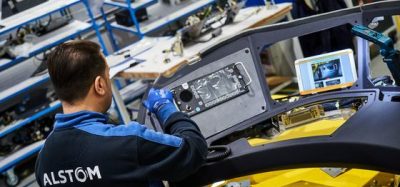The Connected Railway In-Depth Focus 2018
Posted: 23 July 2018 | Global Railway Review | No comments yet
Innovative and intelligent solutions are greatly impacting the rail sector. The digital era has the potential to not only revolutionise rail transportation for passengers and freight, but also provide operators and infrastructure owners with a more connected and streamlined approach to how they run their services.


- Re-igniting the ‘wow’ factor in Germany’s railways
The railways in Germany are a success story that’s existed for 180 years, bringing growth, prosperity and unrestricted mobility. Now, however, they face one of their greatest tests: Andreas Scheuer, Federal Minister of Transport and Digital Infrastructure in Germany explains why. - Rail transport in the digital age
Over the last few years, technology and IT developments have been pushing the transport sector to the edge of great changes. Digital technology has had a significant influence on mobility patterns and customers’ expectations, affecting the way the transport sector is dealing with user information, payments, integration and automation. For Global Railway Review, Philippe Citroën, General Manager of UNIFE, explains that we can reasonably expect that digital transformation to advance even further, as improvements are anticipated in areas such as asset management, operations and the user’s role. - Striving for ‘connected’ excellence
More than 10,670 trains with 1.26 million passengers and 210,000 tonnes of freight operate daily on Swiss Federal Railway’s (SBB) 3,000km-long network. It is therefore easy to see why many believe the Swiss have become champions of rail travel. Michaela Stöckli, General Manager of SWISSRAIL and Noah Gunzinger, representative of a SWISSRAIL member company, take a closer look at how a much more ‘connected’ railway can only further improve the reliability and availability of Switzerland’s rail network. - Intelligent sensors for rail industries in the digital age
Inductive wheel sensors and axle counters are state-of-the-art when it comes to reliable train detection and track vacancy detection. Increasing digitalisation has also meant that various concepts such as the Internet of Things (IoT) are becoming established in the rail industry. Combining this potential with the proven capabilities of existing systems is opening up new possibilities; Martin Rosenberger, Director Product Management, Frauscher Sensor Technology, explores further.
OUT NOW: The Definitive Guide to Rail’s Digital Future
The rail industry is undergoing a digital revolution, and you need to be ready. We have released our latest market report, “Track Insight: Digitalisation.”
This is not just another report; it’s your comprehensive guide to understanding and leveraging the profound technological shifts reshaping our industry. We move beyond the buzzwords to show you the tangible realities of AI, IoT, and advanced data analytics in rail.
Discover how to:
- Optimise operations and maintenance with real-time insights.
- Enhance passenger services through seamless, high-speed connectivity.
- Leverage technologies like LEO satellites to improve safety and efficiency.
Featuring expert analysis from leaders at Nomad Digital, Lucchini RS, Bentley Systems and more, this is a must-read for any rail professional.
This In-Depth Focus is restricted - login or subscribe free to access


Why subscribe? Join our growing community of thousands of industry professionals and gain access to:
- Bi-monthly issues in print and/or digital format
- Case studies, whitepapers, webinars and industry-leading content
- Breaking news and features
- Our extensive online archive of thousands of articles and years of past issues
- And it's all free!
Click here to Subscribe today Login here
Issue
Related topics
Digitalisation, Infrastructure Developments, Internet of Things (IoT), Safety, Track Systems
Related organisations
Frauscher Sensor Technology Group, Frauscher Sensortechnik GmbH, German Federal Ministry for Transportation and Digital Infrastructure (BMVI), Swissrail Industry Association, UNIFE (the European Rail Supply Industry)
Related people
Andreas Scheuer, Martin Rosenberger, Michaela Stöckli, Philippe Citroën








